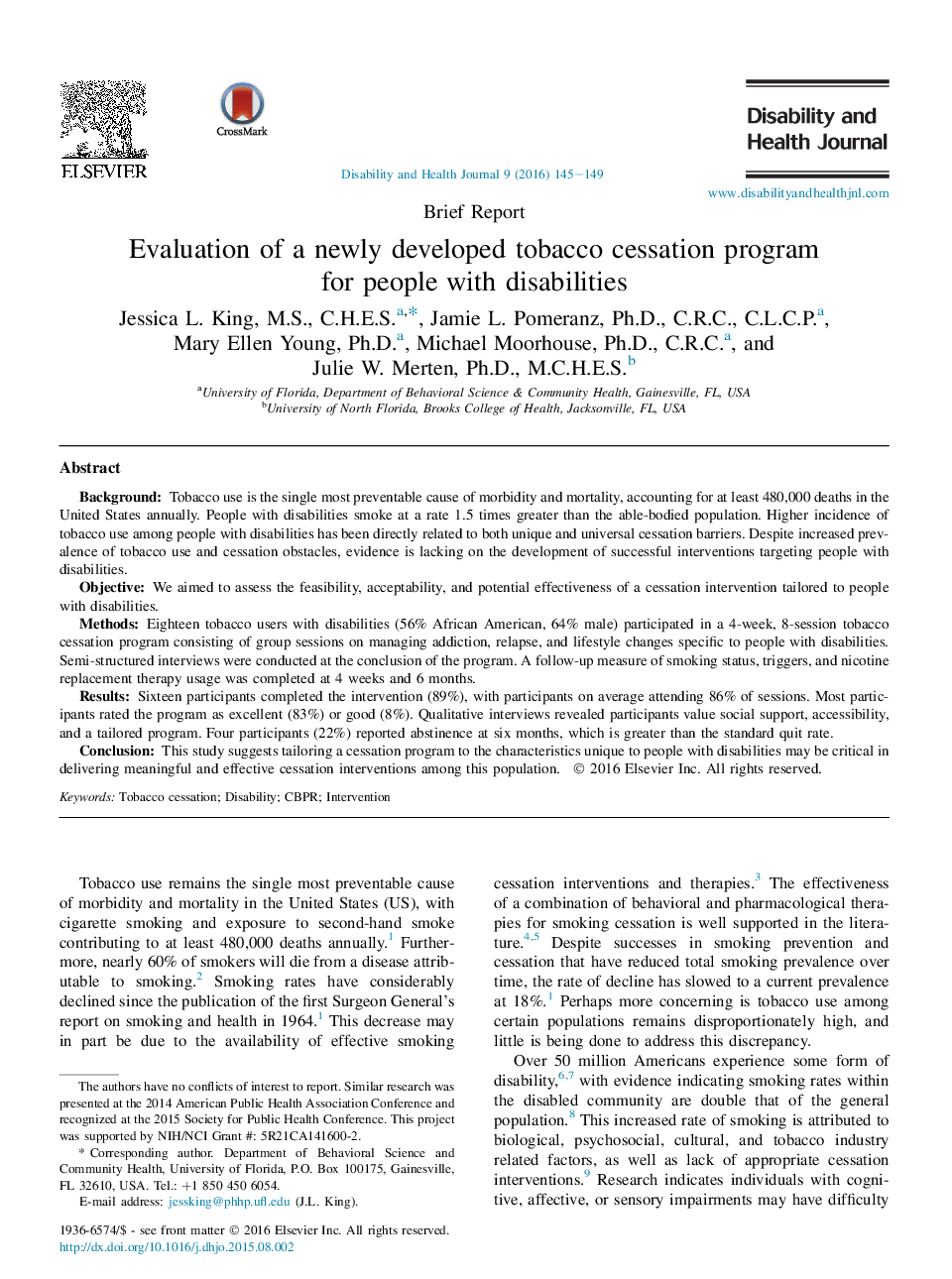| Article ID | Journal | Published Year | Pages | File Type |
|---|---|---|---|---|
| 6238729 | Disability and Health Journal | 2016 | 5 Pages |
BackgroundTobacco use is the single most preventable cause of morbidity and mortality, accounting for at least 480,000 deaths in the United States annually. People with disabilities smoke at a rate 1.5 times greater than the able-bodied population. Higher incidence of tobacco use among people with disabilities has been directly related to both unique and universal cessation barriers. Despite increased prevalence of tobacco use and cessation obstacles, evidence is lacking on the development of successful interventions targeting people with disabilities.ObjectiveWe aimed to assess the feasibility, acceptability, and potential effectiveness of a cessation intervention tailored to people with disabilities.MethodsEighteen tobacco users with disabilities (56% African American, 64% male) participated in a 4-week, 8-session tobacco cessation program consisting of group sessions on managing addiction, relapse, and lifestyle changes specific to people with disabilities. Semi-structured interviews were conducted at the conclusion of the program. A follow-up measure of smoking status, triggers, and nicotine replacement therapy usage was completed at 4 weeks and 6 months.ResultsSixteen participants completed the intervention (89%), with participants on average attending 86% of sessions. Most participants rated the program as excellent (83%) or good (8%). Qualitative interviews revealed participants value social support, accessibility, and a tailored program. Four participants (22%) reported abstinence at six months, which is greater than the standard quit rate.ConclusionThis study suggests tailoring a cessation program to the characteristics unique to people with disabilities may be critical in delivering meaningful and effective cessation interventions among this population.
